Table of contents
Use in the kitchen
Can you eat cocoa beans raw? The dark brown seeds of the cocoa tree ( Theobroma cacao L.) can be eaten unroasted but fermented. Fermented cocoa beans are particularly suitable as a snack. It is questionable whether they are really raw food, as temperatures of around 50 °C can be reached during fermentation and the beans lose their ability to germinate.
How can you eat cocoa beans? Cocoa beans have a bitter taste, which can be somewhat softened by eating them with a sweet date . Cocoa nibs can be made from cocoa beans (fermented). Cocoa nibs are fragments of peeled, fermented, dried and cleaned cocoa beans. Purchased nibs are often roasted. They are used in baking, in muesli or in nut-fruit mixtures. The crunchy nibs are also suitable for vegan smoothies and shakes. Even spicy dishes, such as chili (sin carne), can be refined with the bitter cocoa nibs.
Ground cocoa beans are the roasted or unroasted raw material for chocolate . By pressing the cocoa mass, the cocoa butter, a yellowish fat, is separated. This leaves the deoiled press cake, which is ground into cocoa powder . The powder is used for baking, for cocoa drinks or ice cream. The shell of the cocoa bean is often a component of tea blends.
Vegan recipe for cake with cocoa beans (nibs)
Ingredients (for 6 people): 200 ml almond drink, 150 g soy yoghurt, 150 g oat flakes, 50 g cocoa nibs (organic), 50 g linseed, 30 g wheat flour, 2 tbsp agave syrup, 2 tbsp apple puree, 1 tsp baking powder .
Preparation: First, preheat the oven to 200 °C (top and bottom heat). Mix all the ingredients together in a large bowl. Put the dough in a greased springform pan and bake the cake in the oven for 30 minutes. Allow the cocoa cake to cool slightly before cutting. The vegan cake should still be very moist on the inside.
Vegan recipe for date balls with cocoa nibs
Ingredients (for 10-12 pieces): 70 g macadamia nuts, 3 tsp cocoa powder (unsweetened), 6 dates, 3 tbsp cocoa butter, 2 tbsp agave syrup, (1 tbsp cane sugar ), 50 g cocoa nibs (organic), 1 pinch of salt, ½ vanilla pod .
Preparation: First, roughly chop the macadamia nuts and grind them finely in a blender. Chop the dates into small pieces and add them to the macadamia nuts together with (the cane sugar,) 2 teaspoons of cocoa powder and salt. Mix the ingredients until you get a smooth mixture. Chill the mixture for 10 minutes and then shape into small balls. Then chill again. Now carefully melt the cocoa butter in a water bath and mix with the agave syrup, the pulp of the vanilla pod and the remaining teaspoon of cocoa powder. Dip the chilled date balls in the chocolate mixture and roll them in the cocoa nibs. Chill the balls in the freezer for at least 30 minutes. As soon as the chocolate is solid, the vegan date balls can be served.
Vegan recipes with fermented cocoa beans can be found under the note: " Recipes that have the most of this ingredient ".
| Not only vegans or vegetarians should read this: Vegans often eat unhealthily. Avoidable nutritional errors . |
Purchasing - Storage
Where to buy raw cocoa beans? Fermented cocoa beans with shells (sometimes also peeled) and cocoa nibs are available as raw food in organic shops, organic supermarkets ( Denn's Biomarkt, Alnatura ), health food stores, drugstores, delicatessens or online.
As mentioned at the beginning, the term "raw" is not always clear. On the one hand, there is no raw food label (seal) - on the other hand, the temperature limits vary regionally and are difficult to check. Fermented cocoa beans are often referred to as raw if they have not been roasted and gently dried. However, cocoa beans usually lose their ability to germinate during fermentation (at around 50 °C) and therefore, strictly speaking, are no longer considered raw food quality. More on this in the chapter Fermentation of cocoa beans.
Some manufacturers measure the temperatures during fermentation and air drying and guarantee a maximum value of 40-45 °C. If you want to be sure that the cocoa beans are raw, we recommend that you ask the retailer.
Supermarkets such as Coop, Migros, Rewe and Edeka do not sell whole cocoa beans, but they do sell cocoa nibs (roasted). In the other supermarkets such as Denner, Volg, Spar, Aldi, Lidl, Billa and Hofer you can occasionally find products that contain cocoa nibs (e.g. muesli mixes). In any case, there are processed products made from cocoa beans, such as cocoa powder (baking cocoa), drinking chocolate (with sugar), chocolate bars (with and without milk) - but not in raw food quality (raw). Buy and consume cocoa and chocolate products rarely and consciously; when buying, look for organic quality and fairly traded products (fair trade seal).
The availability of fermented cocoa beans varies depending on the size of the store, catchment area, etc. If you are interested, click on our recorded food prices for the DA-CH countries (above under the ingredient image). There you will find current prices from various supermarkets and their price development.
Storage tips
Always store cocoa beans (fermented) in a cool, dry and dark place. Cocoa beans are very sensitive to odors, so they should never be stored next to coffee or similarly odorous foods. Too much humidity leads to mold growth. Storage temperatures of over 25 °C can cause the cocoa beans to over-ferment and spoil the beans. 2 If the cocoa beans smell bad or rancid or have a strange taste, please stop using them.
Ingredients - Nutritional values - Calories
100 g of fermented cocoa beans contain around 639 kcal. They mainly come from the fat they contain (57 g/100g), of which around 34% are saturated fatty acids. The carbohydrate content is around 24 g/100g (of which 13% is fiber). Proteins are around 14 g/100g (see table above).
The protein in cocoa beans (fermented) is made up of valuable amino acids: tryptophan covers 91% of the daily requirement at 0.22 g/100g, the really essential threonine at 0.61 g/100g makes up 66% of the daily requirement and valine at 0.88 g/100g covers 55% of the daily requirement. Tryptophan acts as a precursor for the vitamin niacin and the neurotransmitter serotonin. 6 Roasted peanuts and roasted cashews contain a similar amount of tryptophan. Shelled hemp seeds have significantly more at 0.61 g/100g. 3
100 g of cocoa beans would cover 64% of the daily magnesium requirement (240 mg/100g), which is comparable to pine nuts . Even more can be found inpumpkin seeds (dried) . 3
The 1,099 mg of potassium contained in 100 g of cocoa beans covers 55% of the daily requirement. Hemp seeds, unshelled, and pistachios achieve comparable values. Cumin seeds (1,788 mg/100g) and turmeric (2,080 mg/100g) contain even more of the trace element. 3
However, neither cocoa beans nor spices and seeds are consumed in large quantities on a daily basis.
The complete ingredients of cocoa beans (fermented, raw?), the coverage of the daily requirement and comparison values with other ingredients can be found in our nutrient tables. In the article Nutrients explained you will get a detailed insight into the topic.
Effects on health
Are cocoa beans healthy? The term "superfood" is often used when talking about cocoa beans. And cocoa beans do indeed contain health-promoting substances, such as antioxidants, but cocoa beans also contain a high proportion of saturated fats. The health effects of cocoa beans are mainly due to the secondary plant substances they contain.
Secondary plant substances
Our article on secondary plant substances provides an overview of the classification of substance groups, their occurrence in foods and possible effects on humans.
Cocoa beans contain the following secondary plant substances:
- Isoprenoids : Terpenes: Triterpenoids: Steroids (phytosterols:beta-sitosterol, campesterol, campestanol, stigmasterol, avenasterol); Saponins and terpenoids 28,29
- Alkaloids : Protoalkaloids (tyramine), true alkaloids (caffeine, theobromine, theophylline, theacrine) 26,27,30
- Polyphenols : Flavonoids: flavanols (epicatechin, catechin), flavones (luteolin, apigenin), flavonols (quercetin) and flavanones (naringenin), anthocyanins; tannins (proanthocyanidin); phenolic acids: hydroxycinnamic acids (caffeic acid, chlorogenic acid, ferulic acid, p-coumaric acid), hydroxybenzoic acids (4-hydroxybenzoic acid, syringic acid, vanillic acid, gallic acid, protocatechuic acid) 10 ,26,28,30
However, it should be noted that the composition of secondary plant substances in cocoa beans can vary depending on the variety, time of harvest and growing conditions. Therefore, quantities are only of limited use and should only be understood roughly.
The flavanols contained in raw cocoa beans (not fermented) are thought to prevent chronic diseases associated with inflammation, oxidative stress and metabolic disorders. 8 In addition, the phenolic antioxidants (polyphenols) in cocoa affect insulin resistance, which is thought to reduce the risk of developing diabetes. 10 The bioactive substances in cocoa have also been shown to help improve the cardiovascular profile by reducing inflammation, oxidative stress, blood sugar and HbA1c (glycated red blood pigment) as well as improving the lipid profile. These changes can help slow or prevent diabetes complications such as diabetic neuropathy. 27 Cocoa flavanols are also said to have a protective effect against UV rays. However, excessive consumption of processed cocoa products, such as chocolate, poses a risk of obesity due to the energy density and added products such as sugar. 10
Cocoa beans have a high content of polyphenols, which have an antioxidant effect by protecting cells from free radicals. These cell-protective properties can contribute to the prevention of cancer. So far, the preventive effect of cocoa polyphenols has only been demonstrated in plant cells. Confirmation of whether these also protect against cancer in humans requires in-depth studies in in vitro and in vivo studies on human cells. 29
A research study with 18 male participants showed that flavonoids (flavanols) contained in cocoa can protect against vascular diseases and improve blood oxygen saturation. They may thus help to strengthen cognitive performance and support the recovery and treatment of brain injuries and diseases. However, further studies with a larger number of participants are necessary to substantiate these findings. 11 It should be noted here that the processing of cocoa beans (e.g. roasting) significantly reduces the flavanol content. 16
In addition to a small amount of caffeine (0.2%), cocoa beans also contain the active ingredient theobromine (1.8-2.7%). 4 Theobromines are bioactive substances that are classified as alkaloids and are related to caffeine. The darker (higher cocoa content) a chocolate, the more theobromine it contains. Roasting cocoa beans reduces the theobromine and caffeine content. 9,26 Both substances have a positive effect on brain health by improving neuroplasticity and protecting neurons from dysfunction and degeneration. 9
Dangers - Intolerances - Side effects
Is too much cocoa harmful? Theobromine has a mood-enhancing effect in small amounts, but too high a dosage can lead to palpitations, migraine-like headaches, tremors, hyperexcitability and sweating. 12
Cocoa beans often have a high cadmium content. The cocoa tree absorbs the heavy metal from the soil and water and accumulates it in its seeds. Cadmium is toxic in all its forms. It accumulates primarily in the kidneys and liver and is said to accelerate cell aging and be carcinogenic. 13
Folk medicine - natural medicine
In America, in pre-Columbian times, cocoa was used as an aphrodisiac; the raw cocoa bean is said to have a stimulating and euphoric effect. In indigenous folk medicine, the fermented cocoa beans are used to treat diarrhea, as the tannins they contain have a constipating effect. The young, fresh leaves can be used to make an invigorating tea or used externally as an antiseptic. 5
Ecological footprint - animal welfare
Different methods have been established for the cultivation of cocoa trees for commercial use. The trees either grow in monocultures, for which existing forests are often cleared to create enough space. Alternatively, there is agroforestry, in which cocoa trees grow in a system of other plants. This means they are not directly exposed to the sun and therefore require less water. Compared to monocultures, there is more potential for biodiversity here. 18
The ecological footprint (in terms of the amount of CO 2 emitted for the production of cocoa beans) depends on the cultivation method (organic or conventional cultivation), but also on the management (monoculture or agroforestry). Organic agroforestry produces the smallest amounts of CO 2 emissions compared to conventional agroforestry or the cultivation of cocoa trees in monocultures. 19 Overall, however, the ecological footprint is large, mainly due to the long transport routes from Africa or South America and the high use of pesticides. 18,20 It is also important to consider the carbon that the trees have stored and that is released when the forests are burned down to create monocultures. This further increases the ecological footprint. 21
It is difficult to understand the type of cultivation under which the cocoa trees are grown for the production of cocoa products. However, you can look for the Rainforest Alliance certified seal. Companies with this certification are encouraged to plant more native trees on their land and promote agroforestry. Child labor can also be excluded through this seal (or Fairtrade ). 22
Cocoa beans have a poor water footprint: almost 20,000 liters of water are needed to produce 1 kg of beans. This is similar to that of roasted coffee, but lower than that of cocoa butter . 23
When buying cocoa products, you should choose products that are as sustainable as possible. Organic logos indicate that the product is grown in an environmentally friendly way (pesticide-free) and that it is produced carefully, while fair trade seals indicate that the product is produced under fair conditions and without child labor. Organic producers also do not use gassing during transport or alkalizing the cocoa mass (additives such as sodium carbonate, potassium carbonate and magnesium oxide, tartaric acid and citric acid are required - without any labeling requirement). 24
For detailed explanations of various sustainability indicators (such as ecological footprint, CO2 footprint, water footprint), see our article: What does the ecological footprint mean? .
Worldwide occurrence - cultivation
It is assumed that the cocoa tree originally comes from Central America. However, some discoveries also point to South America. 25 The sweet flesh of the cocoa fruit has been processed into an alcoholic drink since 1000 BC. The Aztecs have known about the plant since the 14th century. The bean was considered a gift from God. In 1502, Spaniards discovered the cocoa tree and brought the brown beans to Europe. Today, 70% of cocoa production takes place in the rainforests of West Africa and 15% in Central and South America. The most important growing countries are the Ivory Coast, Ghana and Indonesia. 4 The most important commercial varieties are Forastero, Criollo and Trinitario, from which numerous hybrids are bred. Forastero cocoa is considered a consumer cocoa and accounts for 80% of the global harvest. It is much more resistant than the other two varieties, but it is a little more bitter, sour and less aromatic than Criollo cocoa. Criollo is difficult to cultivate and is considered a fine cocoa. It accounts for only 3-5% of the cocoa harvest and is more aromatic and milder in taste than Forastero cocoa. Trinitario is a fine cocoa cross between Forastero and Criollo. 7
Found in the wild
Wild cocoa can still be found in southern Mexico 5 and South America (Brazil, Peru, Bolivia, Colombia, etc.). 15 The cocoa trees grow irregularly along rivers (eg Amazon) in the shade of large rainforest trees. The fruits and raw cocoa beans of the wild plants are smaller than the cultivated beans. 1 In some wild cocoa species, the pulp is used in addition to the seeds, eg for jams and compotes ( Theobroma grandiflora ) or for refreshing, fermented, wine-like drinks ( Theobroma bicolor ). 5,15
Cultivation - Harvest
The cocoa tree needs a consistently warm and humid tropical climate and no direct sunlight to grow. It can therefore only be grown in regions around the equator. The trees reach a size of up to 15 m and thrive best in the shade of other trees. Harvesting is only possible from the 8th year onwards, but the trees can reach an age of up to 60 years. The tree blooms all year round, so that flowers and fruits, which grow directly on the trunk and on the thicker branches, develop at the same time. The fruits (pods) change colour from green to yellow to red or take on a purple appearance when ripe. Harvesting takes place in at least 2 periods. 5.15
The cultivation of cocoa beans is largely done by hand and is therefore very labor-intensive. The ripe fruits are cut from the tree with sharp knives. The fruits are opened with a machete and the pulp, together with the raw cocoa beans, is removed from the shell.
Fermentation of cocoa beans
How do you ferment cocoa beans? To do this, you spread the raw flesh of the cocoa fruit on banana leaves and cover it with another layer of leaves. Alternatively, you can ferment the beans in a box. In the tropical heat, yeast, acetic acid and lactic acid bacteria quickly begin to convert the sugar into alcohol and then into acetic acid. During this biochemical fermentation process, the beans reach temperatures of around 50 °C, 17 and the pulp (the slimy, white mass in which the beans are embedded) evaporates. Depending on the fermentation method and weather conditions, the fermentation of cocoa or the beans is completed after around 3-6 days. It is essential for the taste of the cocoa beans. 15 Only now do the beans get their dark color and are no longer capable of germinating.
The fermented beans must then be left to dry in the fresh air for around 15 days (with or without direct sunlight). 4 Conventional cocoa beans are fumigated for transport to prevent them being eaten by pests such as cocoa moths, meal moths, ants or cockroaches. 2
The cocoa beans are then cleaned and peeled ("raw") and processed. In addition to the fragments known as nibs, whole cocoa beans can also be roasted 4 (temperatures between 90 and 150 °C are usual). The broken kernels (roasted or unroasted) are often further processed by grinding.
Further information
The Latin name Theobroma cacao comes from Karl von Linné. Theobroma comes from the Greek and means "food of the gods". The Mayans used "cacao" to refer to the tree, the fruit and the well-known drink. The Aztecs called their drink "xocolatl", from which the word chocolate was derived. 5
Alternative names
Cocoa beans (raw) are also known in German as cocoa seeds. Often you will simply find the name cocoa or cacao. Incorrect spellings such as cocoa bean (cocoa beans), cacao bean, cocoa bean, cacaobean (cacao beans), cacaobonen or cocoa bean crop up again and again.
Rätsch names some Latin synonyms, such as Cacao guianensis, Cacao minus, Cacao sativa, Theobroma caribaea, Theobroma interregima, Theobroma kalagua, Theobroma leiocarpa, Theobroma pentagona, Theobroma saltzmanniana, Theobroma sapidum, Theobroma sativa, Theobroma sphaerocarpa . 5
In English, cocoa beans are called cocoa beans or just cocoa, fermented cocoa beans are called fermented cocoa beans (incorrectly: fermented cacao beans). Raw, unfermented cocoa beans are called raw unfermented cocoa beans.
Other uses
The shells of the fermented cocoa bean are also used as fertilizer or as feed for poultry. The fat contained in cocoa beans (cocoa butter) is sometimes referred to as cacao oleum (drug name) and is used as a base for suppositories. 14 Due to its caring and nourishing properties, cocoa butter is used in many cosmetic products. Creams and soaps, anti-aging products, shampoos and hair masks make use of its moisturizing effect.
Bibliography - 30 Sources
| 1. | Regenwaldladen.de Produkte aus Wildkakao. |
| 2. | Theobroma-cacao.de Gefahren bei Lagerung und Transport von Kakaobohnen. |
| 3. | USDA United States Department of Agriculture. |
| 4. | Pini U. Das Bio-Food Handbuch. Ullmann: Hamburg, Potsdam. 2014. |
| 5. | Rätsch C. Enzyklopädie der psychoaktiven Pflanzen. Botanik, Ethnopharmakologie und Anwendung. AT Verlag: Aarau. 1998. 14. Aufl. 2018. |
| 6. | Strasser B, Gostner JM, Fuchs D. Mood, food, and ,,,: role of tryptophan and serotonin. Curr Opin Clin Nutr Metab Care. Januar 2016;19(1):55–61. |
| 7. | Theobroma-cacao.de Kakaobohnen - Sorten & Qualität. |
| 8. | Jaramillo Flores ME. Cocoa flavanols: natural agents with attenuating effects on metabolic syndrome risk factors. Nutrients. 30. März 2019;11(4):751. |
| 9. | Camandola S, Plick N, Mattson MP. Impact of coffee and cacao purine metabolites on neuroplasticity and neurodegenerative disease. Neurochem Res. Januar 2019;44(1):214–227. |
| 10. | Katz DL, Doughty K, Ali A. Cocoa and chocolate in human health and disease. Antioxid Redox Signal. 15. November 2011;15(10):2779–2811. |
| 11. | Gratton G, Weaver SR, et al. Dietary flavanols improve cerebral cortical oxygenation and ,,, in healthy adults. Scientific Reports. 24. November 2020;10(1):19409. |
| 12. | Baggott MJ, Childs E, Hart AB, et al. Psychopharmacology of theobromine in healthy volunteers. Psychopharmacology (Berl). Juli 2013;228(1):109–118. |
| 13. | Maddela NR, Kakarla D, et al. Cocoa-laden cadmium threatens human health and cacao economy: A critical view. Sci Total Environ. 10. June 2020;720:137645. |
| 14. | Pahlow M. Das grosse Buch der Heilpflanzen. Nikol Verlagsgesellschaft, 9. Auflage 2020. |
| 15. | Brücher H. Tropische Nutzpflanzen. Ursprung, Evolution und Domestikation. Springer Verlag: Berlin. 1977. |
| 16. | Ioannone F, Di Mattia CD et al. Flavanols, proanthocyanidins and antioxidant activity changes during cocoa (Theobroma cacao L.) roasting as affected by temperature and time of processing. Food Chem. 1. May 2015;174:256–262. |
| 17. | De Vuyst L, Weckx S. The cocoa bean fermentation process: from ecosystem analysis to starter culture development. Journal of Applied Microbiology, 2016;121(1):5–17. |
| 18. | Blog.wwf.de Schokolade und Umwelt: die dunkle Seite. |
| 19. | Pérez-Neira D, Copena D, Armengot L, Simón X. Transportation can cancel out the ecological advantages of producing organic cacao: The carbon footprint of the globalized agrifood system of ecuadorian chocolate. Journal of Environmental Management. 15 December 2020;276:111306. |
| 20. | Ntiamoah A, Afrane G. Environmental impacts of cocoa production and processing in Ghana: life cycle assessment approach. Journal of Cleaner Production. Nov 2008;16(16):1735-1740. |
| 21. | Melillo JM, Houghton RA, Kicklighter DW, McGuire AD. Tropical Deforestation and the global carbon budget. Annu. Rev. Energy Environ. 1996; 21:293-310. |
| 22. | Rainforest-Alliance. Rainforest Alliance-zertifizierter Kakao. 2022. |
| 23. | Mekonnen MM, Hoekstra AY. The green, blue and grey water footprint of crops and derived crop products. Hydrol. Earth Syst. Sci. 2011; 15:1577-1600. |
| 24. | Chemie-in-lebensmitteln.katalyse.de Gewinnung von Kakaopulver und Kakaobutter. |
| 25. | Zarrillo S, Gaikwad N, Lanaud C et al. The use and domestication of Theobroma cacao during the mid-Holocene in the upper Amazon. Nat Ecol Evol 2, 1879–1888 (2018). |
| 26. | Febrianto NA, Wang S, Zhu F. Chemical and biological properties of cocoa beans affected by processing: a review. Critical Reviews in Food Science and Nutrition. Oct 2022;62(30):8403–8434. |
| 27. | Kababie-Ameo R, Rabadán-Chávez GM, Vázquez-Manjarrez N, Gutiérrez-Salmeán G. Potential applications of cocoa (Theobroma cacao) on diabetic neuropathy: mini-review. FBL. Feb 2022;27(2):57. |
| 28. | Cerri M, Reale L, Zadra C. Metabolite storage in theobroma cacao l. Seed: cyto-histological and phytochemical analyses. Front Plant Sci. Dec 2019;10:1599. |
| 29. | Ebuehi OAT, Anams C, Gbenle OD, Ajagun‐Ogunleye MO. Hydro‐ethanol seed extract of Theobroma cacao exhibits antioxidant activities and potential anticancer property. J Food Biochem. Apr 2019;43(4):e12767. |
| 30. | Bäumler S. Heilpflanzenpraxis Heute. Arzneipflanzenporträts. 3. Auflage. München: Elsevier. 2021. |

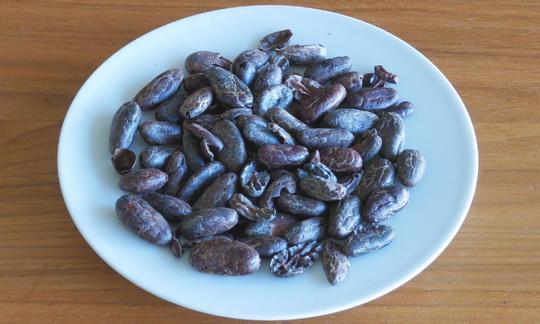

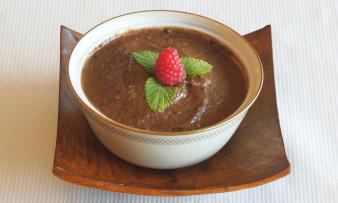
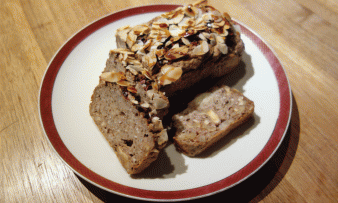

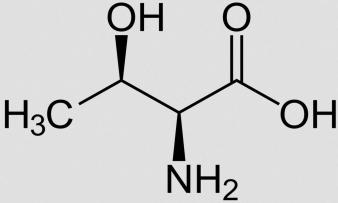
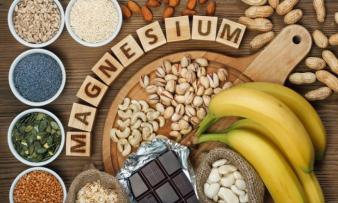


Comments